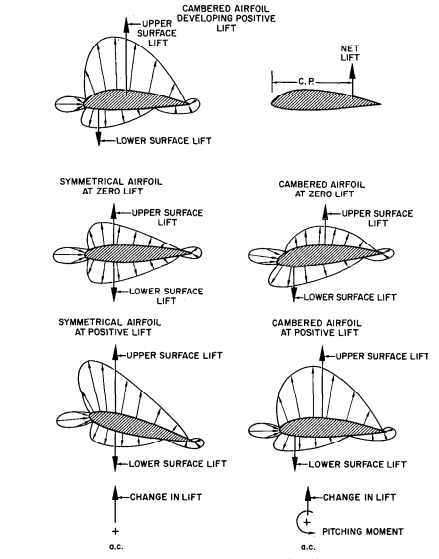The lower surface lift vector points downwards in the diagram, not upwards. The nett lift is the sum of the two lift vectors, and since the lower surface lift vector is opposite to the upper, nett lift is upper surface lift minus lower surface lift.
The nett lift points upwards in the top figure, as the upper surface lift is greater than the lower surface lift.
In the middle diagram, both upper and lower surfaces have the same lift magnitude so the nett lift is zero. Note that the chord line of the symmetric airfoil is parallel to the airflow. This wing section has zero angle of attack (angle between the airflow and the chord line), so both the upper and lower surfaces have the same angle of attack and generate the same lift, cancelling each other out. On the cambered airfoil, the angle of attack is slightly negative for zero nett lift. This is because the camber causes the upper surface to generate more lift than the lower surface for a given AoA.
In the lower diagram, the upper surface has an increased angle of attack, while the lower surface has a decreased angle of attack. So the lift of the upper surface is increased and that of the lower surface is decreased, and the nett lift is upward.
Note that the terms "up" and "down" have to be used carefully, since we usually use those terms in the context of gravity. A lift-producing airfoil has no concept of gravity, only of angle of attack. The airfoils in the diagram would produce the same lift with respect to the angle of attack regardless of the orientation of the airfoil with respect to gravity. If you turned any of these diagrams upside down, the airfoils would produce exactly the same lift with respect to the surface as they did in the original ("upright") orientation.

